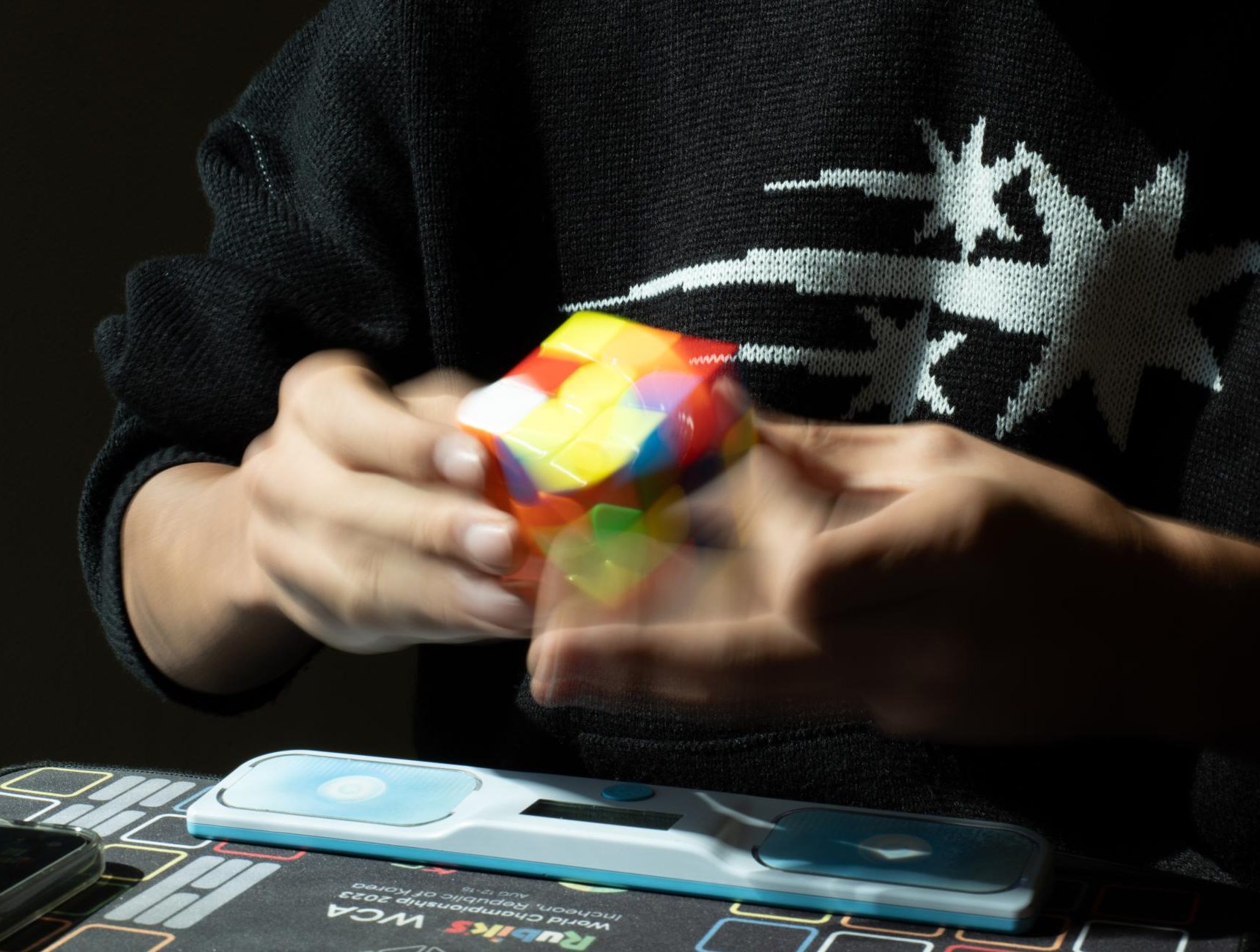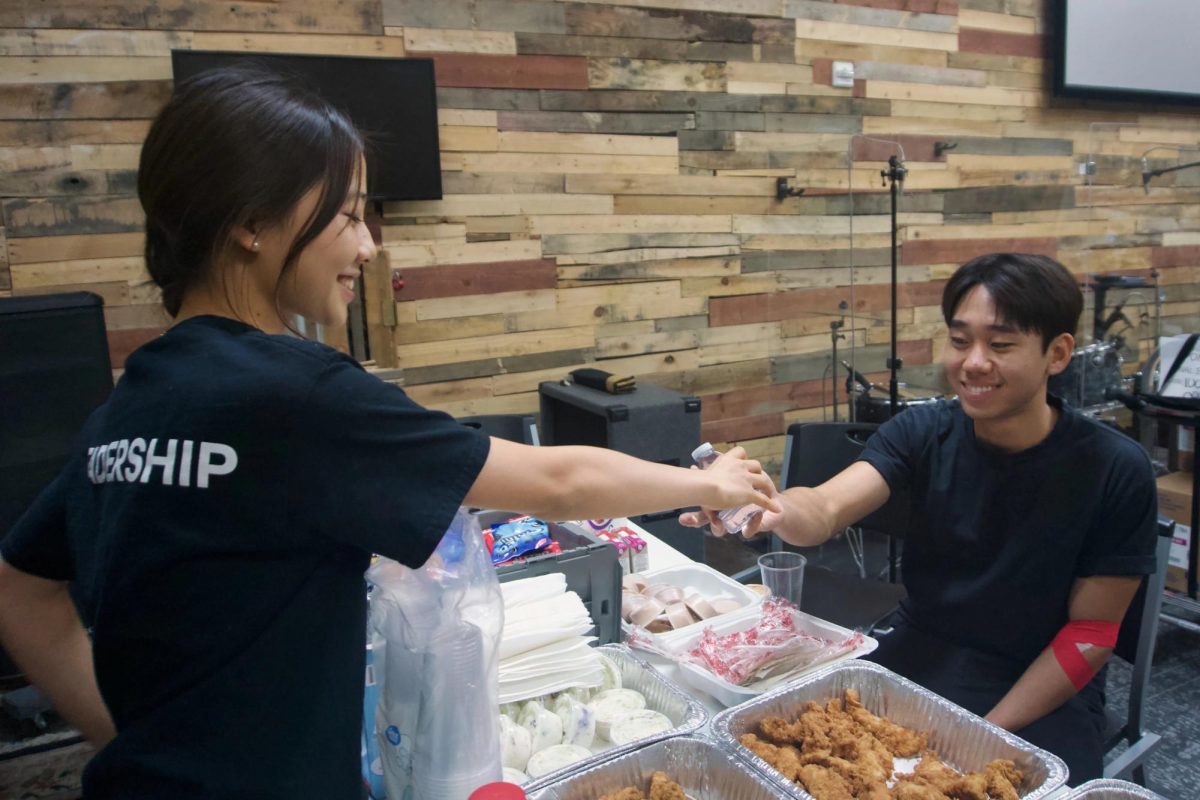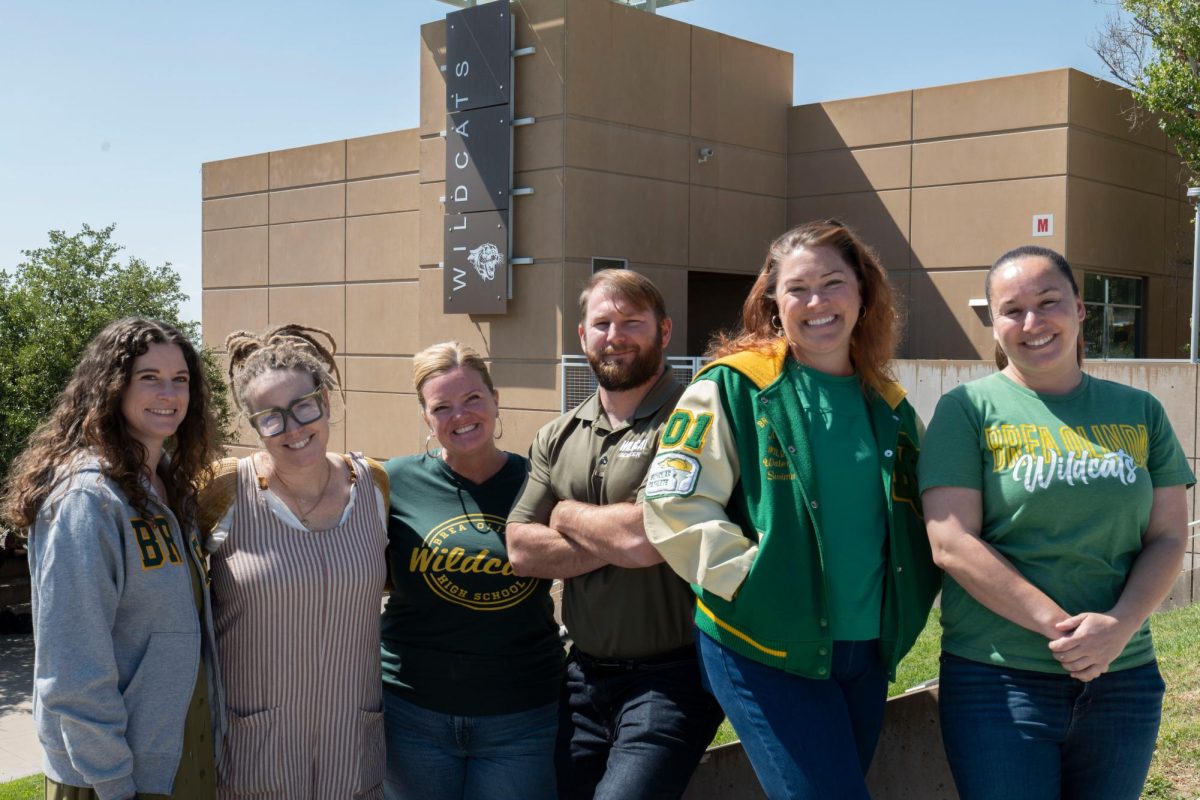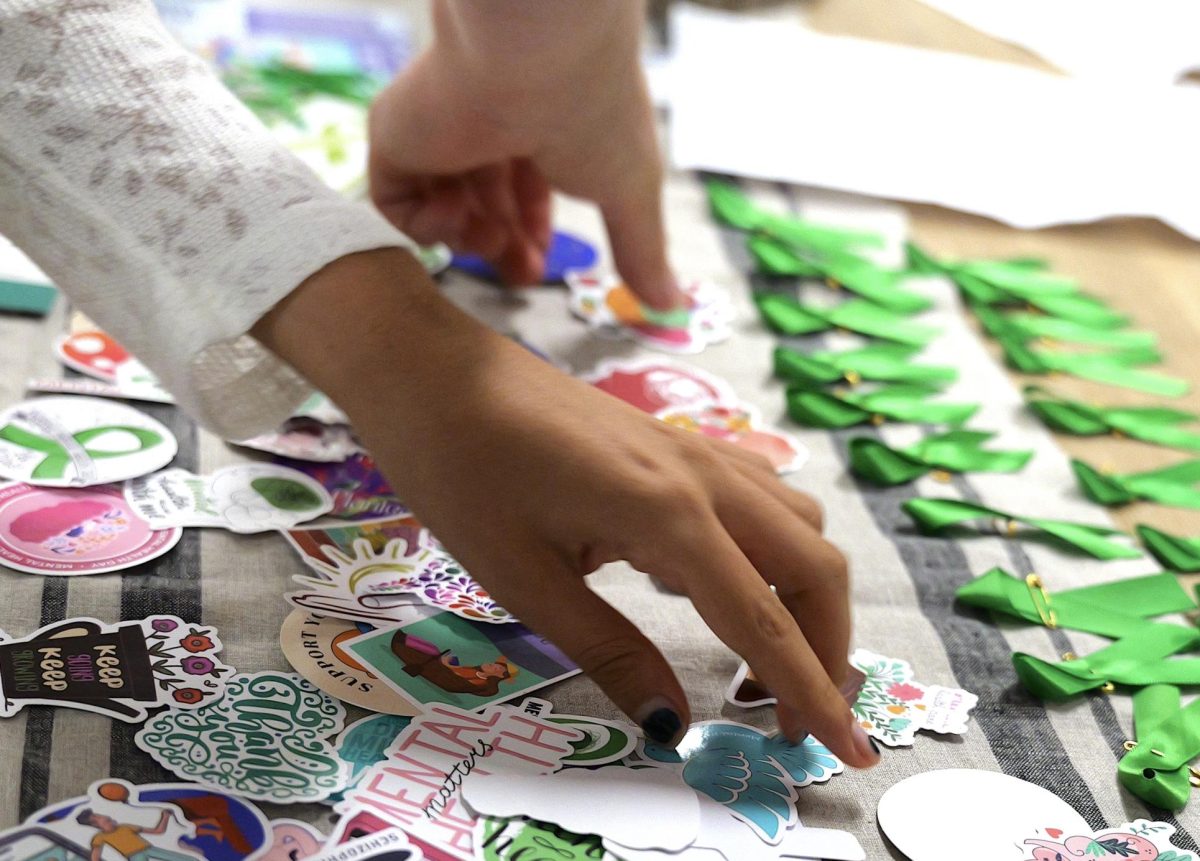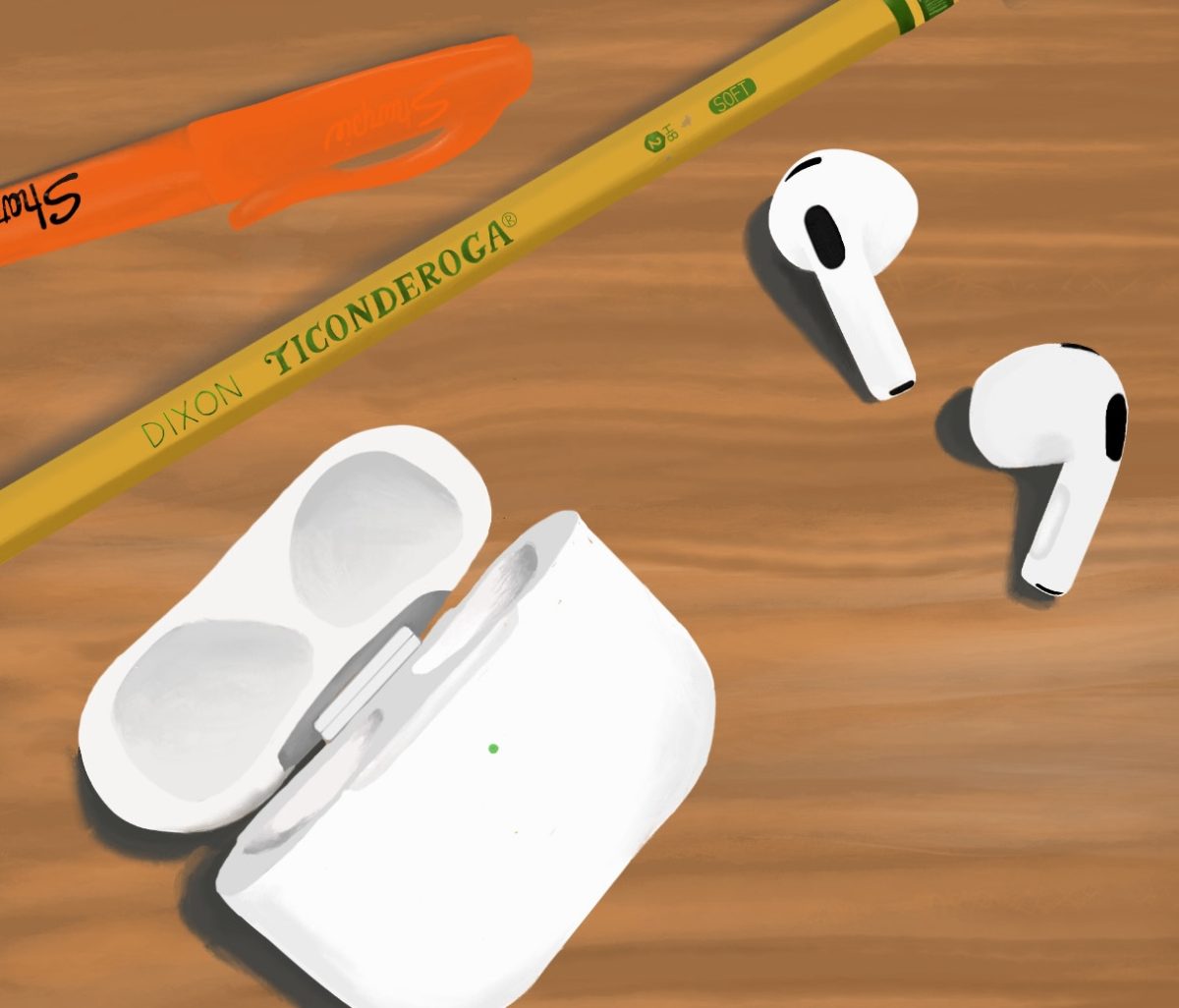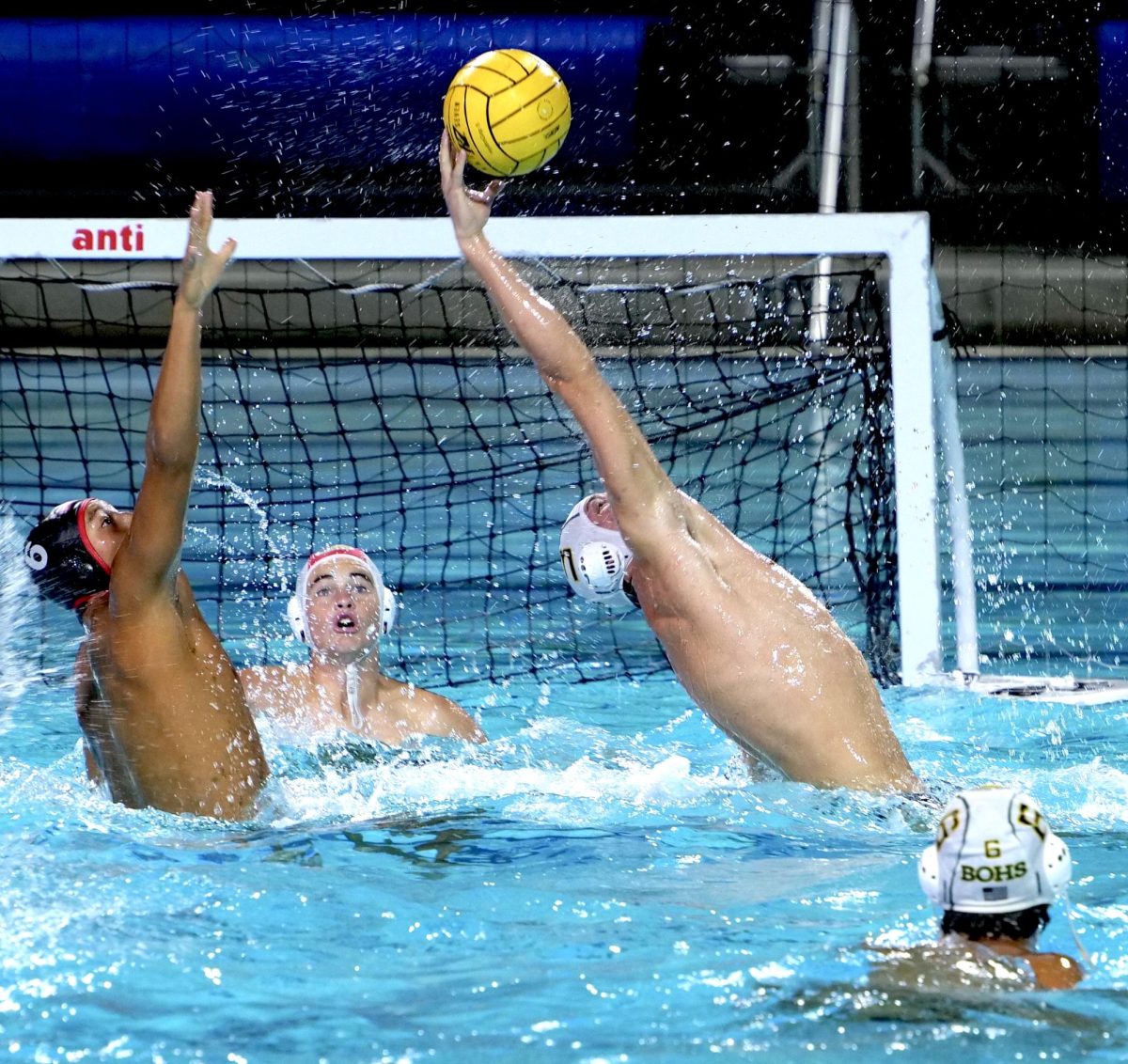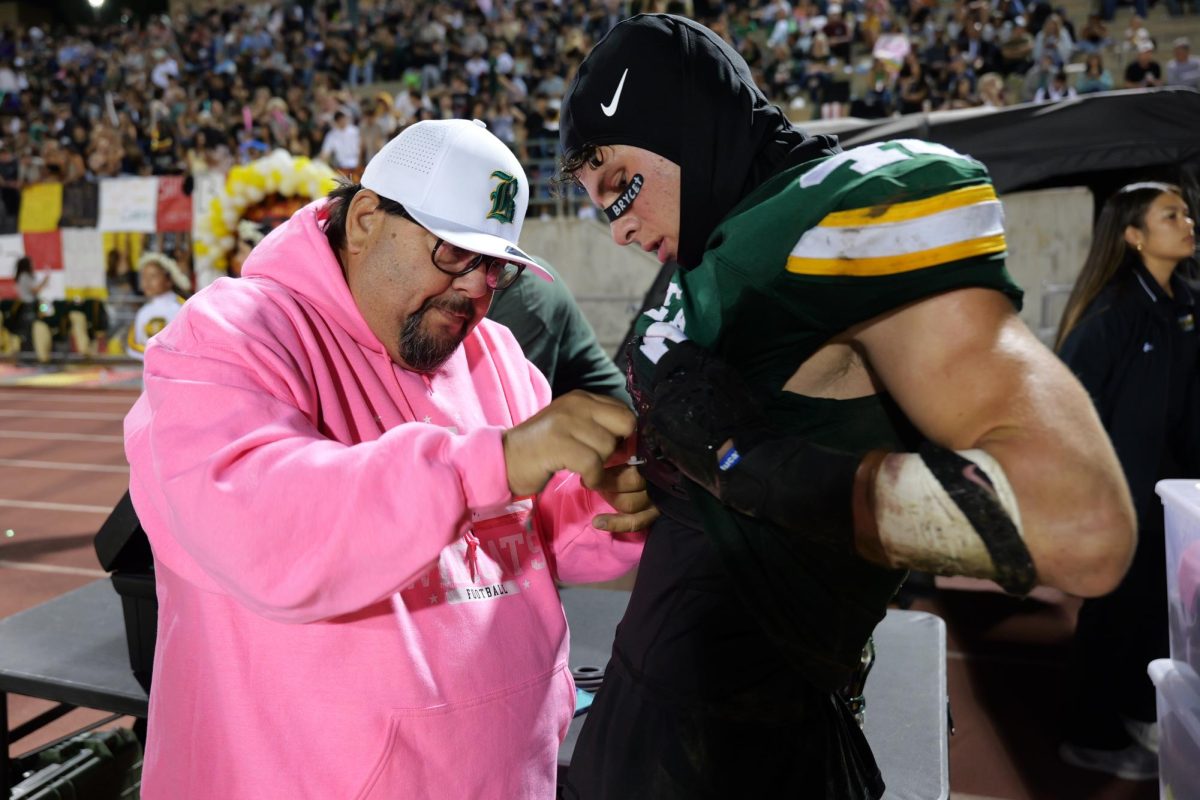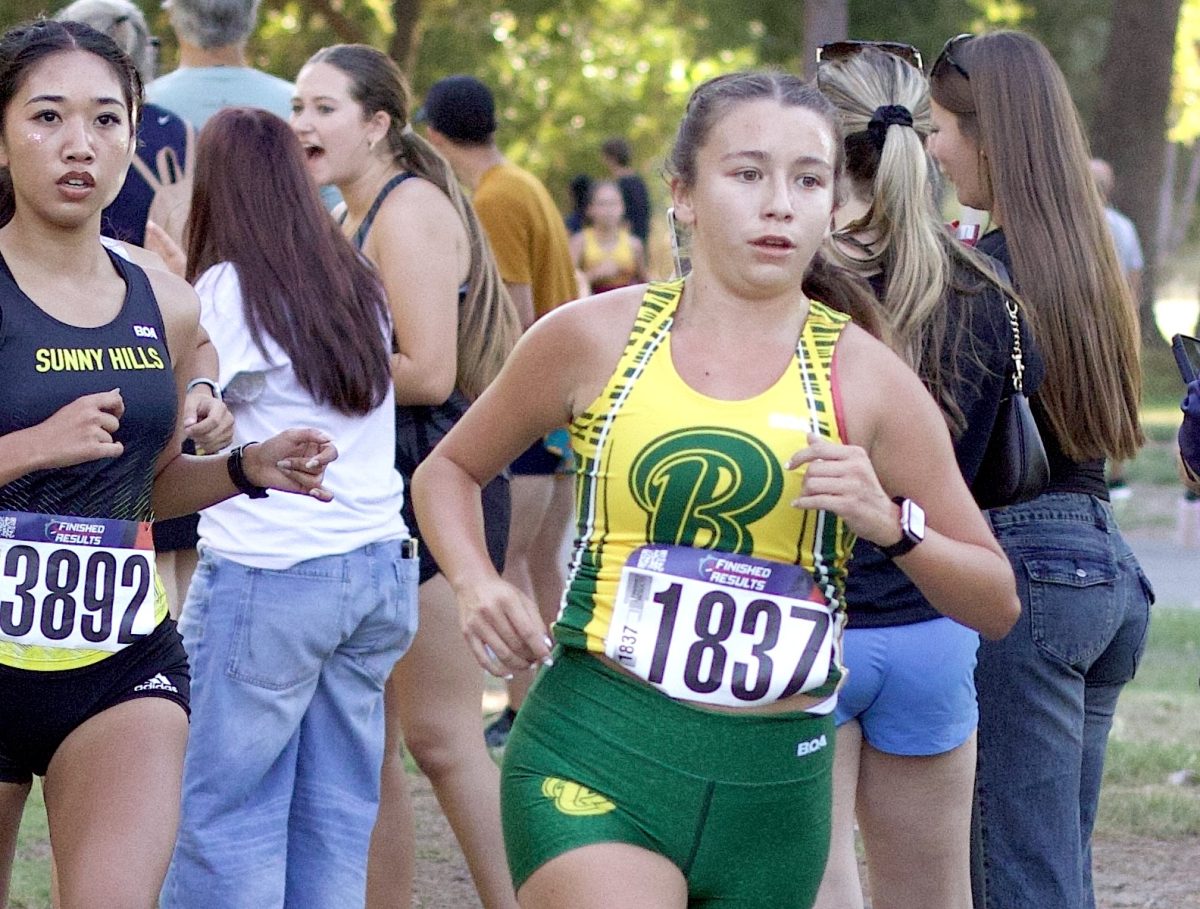Hands steady on a mat timer, Jayden Jung (’28) takes a deep breath and a final moment of strategizing before reaching for a scrambled Rubik’s Cube positioned in front of him.
The timer starts, and Jung’s hands and fingers blur as they turn levels until each of the six sides sports a uniform color. He releases the cube, checks the time, and hopes his “solve” was faster than his competitors.
This is the world of competitive speedcubing, a sport of over 150,000 registered participants who compete to solve Rubik’s Cubes in seemingly impossible times. It’s a world that Jung, a nationally-ranked speedcuber, has participated in since 2022.
Created by Hungarian Ernö Rubik in 1974 as an experiment in structural engineering, the “Magic Cube” became a global phenomenon after its international debut. By 1983, over 200 million had been sold. Although the puzzle’s sales waned in the mid-’80s, it remained popular amongst speedcubers, who compete for the fastest solves.
Jung was introduced to the Rubik’s Cube in Korea during middle school. Inspired by his classmates who were solving cubes competitively, Jung started practicing with the classic 3×3 cube (the most common of the cube shapes), and eventually entered the speedcubing circuit in 2022.
Jung attended his first competition in Korea, the Seoul Summer 2022 tournament. In his inaugural competition, Jung’s fastest 3×3 solve was 19.69 seconds. (A beginning speedcuber can solve a 3×3 cube in about 60 seconds, and advanced cubers, like Jung is now, can perform solves in around 15 seconds.)
“I feel like I was pretty talented compared to other people, but I still had to put in a lot of work,” Jung said.
Since trading online gaming for speedcubing (Jung acknowledged that speedcubing helped him curb an addiction to the battle royale video game PUBG: Battlegrounds), Jung has spent the last three years practicing and competing in nearly every cubing event (see sidebar below) available — 15 competitions to date — in locations near (Pomona) and far (Seoul, Korea).
In competition events, speedcubers perform five solves on the same cube, and their final score is calculated from the average of median three times.
Of the myriad events, Jung admits that 3×3 is his favorite because it was his first cubing experience, and he has trained for it the most.
Training for competition is rigorous, and very technical. Jung uses a method called Cross, First 2 Layers, Orientation of the Last Layer, and Permutation of the Last Layer (CFOP), which requires mastery of up to 119 “algorithms” (combinations of moves) that help cubers determine which turns to make based on the cube’s specific arrangement. He commits most of his free time to perfecting the CFOP method and lowering his turns per second (TPS) through repetition.
While the steps seem simple — rotating levels on a cube over and over again — speedcubers can devote years to learning more algorithms and practicing just to decrease their times by tenths of a second.
“Reducing time is really hard,” Jung said. “You have to increase your TPS, then predict future steps. It’s just practice.”
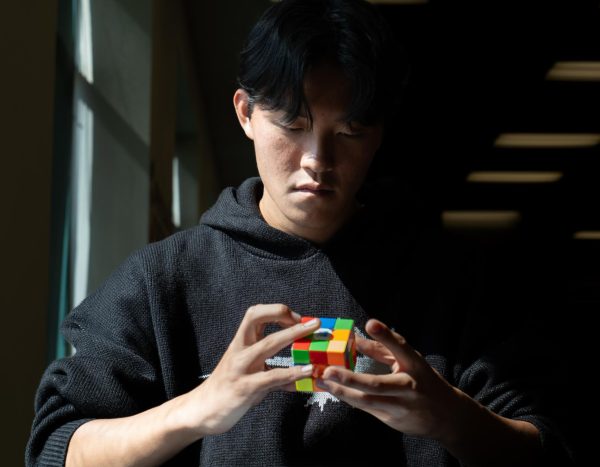
In August 2023, Jung attended the World Championship in Incheon, Korea, and placed 443rd out of 1400 competitors. Currently, the BOHS sophomore ranks 37th nationally in 3×3 cubing, with an average solve of 8.23 seconds.
Despite his expertise, however, he still experiences setbacks in his quest for his fastest time of 6.26 seconds. (The world record in the 3×3 is 3.05 seconds.)
“I actually hit a slump,” Jung confessed. In the speedcubing world, “slumps” mean slower averages and personal frustration. “I used to average ten seconds, but then it became twelve,” Jung said.
Still, Jung perseveres.
He considers the greatest speedcubers to be the ones who stay passionate about the sport despite the setbacks, who develop their own unique approaches to solves, and who commit to reducing times.
“Even if I don’t want to do it, I do it, because I know that if I try, I’ll get better,” Jung said. “Speedcubing taught me that lesson.”
Jung’s commitment to improving resulted in a personal best 6.26-second solve in the 3×3 event at the Poly Cubed at Pomona tournament Oct. 18. Although he didn’t podium at the event due to a 10-second solve and a DNF in his first two attempts, he is proud of the PR and uses it to fuel his training for upcoming competitions.
“I know that my passion towards the goal of a podium will eventually win me an award,” Jung said.
As Jung prepares for the Korean Championship 2025, in Seoul, Korea, Dec. 27 and 28, he plans to temper his expectations because “less expectations lead to less pressure and better results.”
But, according to Jung, “‘speedcubing’ doesn’t just mean speedcubing.” For Jung, the sport is a lesson in consistency and commitment, one solve at a time.




